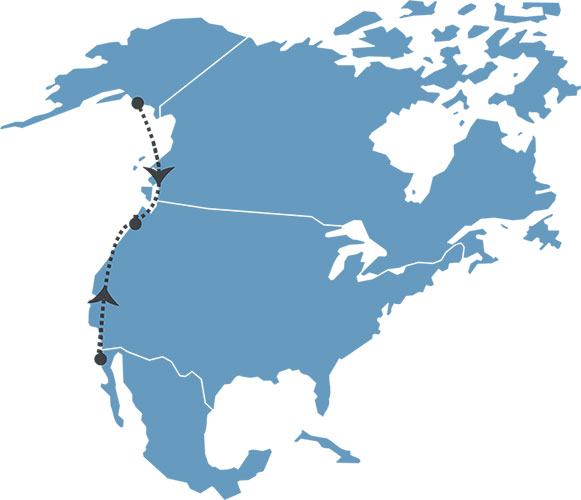Linking Sites, Linking Communities
Pacific Flyway Exchange
In the Pacific flyway exchange focused on two components – ecotourism and research.
Site partners at Willapa Bay and Long Beach Peninsula, Grays Harbor, and Bahia de Todos Santos traveled to Copper River Delta. The goal of the exchange was to facilitate the sharing of best practices and lessons learned from Cordova, Alaska about ways to develop ecotourism opportunities that promote shorebird conservation while generating economic benefits for the local economy.

To build the capacity of partners in Copper River Delta and Bahia de Todos Santos, representatives traveled to Grays Harbor to capture Red Knots and deploy 23 satellite transmitters. All CEC-supported participants enhanced their experience and skills by being part of the banding team and observing and studying Red Knots. By building relationships and sharing their experiences with local communities back at home, their participation in the site exchange also served to strengthen Pacific Flyway connections. In the coming months, it is likely that new aspects of Red Knot migration will emerge from the tracking data, perhaps we will find that these three sites are visited by the same Red Knot.
Sites
Copper River Delta
Alaska, USA
The Copper River Delta in Alaska is an important staging area for nearly five million migrating shorebirds in early May, and also provides nesting […]
Grays Harbor
Washington, USA
Grays Harbor is a large bay on the southern coast of Washington State used by Red Knots and many other species of shorebirds for […]
Willapa Bay and Longbeach Peninsula
Washington, USA
Willapa Bay and the Long Beach Peninsula represent the largest remaining tidal mudflat and coastal salt marsh habitat in southwestern Washington […]
Bahía de Todos Santos
Baja California, Mexico
Off the coast of Ensenada, in Baja California, Bahía de Todos Santos hosts a number of overwintering migratory birds, including roselaari Red Knots […]

Produced with support from the Commission for Environmental Cooperation – www.cec.org
The Commission for Environmental Cooperation (CEC) is an intergovernmental organization that supports the cooperative environmental agenda of Canada, Mexico and the United States to green North America’s economy, address climate change by promoting a low-carbon economy, and protect North America’s environment and the health of its citizens.
To foster North American conservation opportunities for Semipalmated Sandpipers (Calidris pusilla) and Red Knots (Calidris canutus—rufa and roselaari subspecies), the Commission for Environmental Cooperation (CEC) started an initiative to inform, engage and connect communities at key sites for these two species. This included linking sites in the Pacific flyway and the Atlantic flyway.




